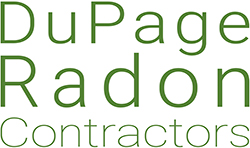Most people think of radon gas as a problem associated with residential buildings. After all, your home is the place where you probably spend the most time and therefore the place you are most at risk for long-term radon exposure. However, you shouldn’t overlook the risk of radon in commercial buildings.
Many employees spend eight or more hours in the same office every day, and if radon levels in their workplace are high, they are at an increased risk for lung cancer.
Employers have an obligation to ensure their workplace is a safe and healthy environment, and their safety precautions should include testing for and commercial mitigation of radon gas when necessary.
Radon in schools and nursing homes can also be an issue, so buildings that cater to children and the elderly should also test for radon. These types of buildings include:
- Multi-family (eg., apartment complexes)
- Schools
- Daycare centers
- Residential care facilities for children (eg., group homes)
- Assisted living facilities
- Hospice care facilities
When Do Commercial Buildings Need to Reduce Their Radon Levels?
The Environmental Protection Agency (EPA) has declared that 4.0 picocuries per liter (pCi/L) is the residential radon level at which homeowners should take action. In other words, if a radon test shows that a home’s radon gas levels are 4.0 pCi/L or higher, the owner should install a radon mitigation system to reduce those levels.
The EPA has not specified a radon action level for commercial buildings. However, the residential standard has increasingly been applied to commercial mitigation. If you own a commercial or multi-family facility and discover that radon levels are at or above 4.0 pCi/L on any floor, you should contact commercial radon mitigation specialists as soon as possible.
Special Considerations for Radon Mitigation in Commercial Buildings
At the most basic level, commercial and residential radon mitigation systems are similar. Both are permanent systems that use a suction point and piping to pull radon gas from the soil below the building and safely discharge it above the roofline. However, commercial building radon diagnostics and mitigation system design can be far trickier.
Commercial buildings can have much more pronounced indoor air flow and increased “stack effect”, a phenomenon that challenges these systems. Also, commercial buildings can have unusual structural features and radon entry points that radon mitigation specialists have to account for. And lastly, commercial buildings may have specific needs and variables that a radon mitigation team will need to consider. For example, a retail store may need to have the installation done in evening hours, or a commercial office might have certain noise restrictions.
DuPage Radon Contractors is experienced in radon removal for commercial buildings and licensed to perform radon mitigation in schools, multi-family apartment complexes, retail, manufacturing, and office buildings. Our team also has a commercial construction background, which helps us design the most affordable and efficient radon systems for each space. We’re very flexible and will work with your building needs, even if that means installing your mitigation system outside of normal business hours or taking special steps to minimize noise or keep children out of our work spaces
Contact us today to get a quote for a commercial radon mitigation system. Keep your employees, tenants, or customers safe by keeping radon levels low.





